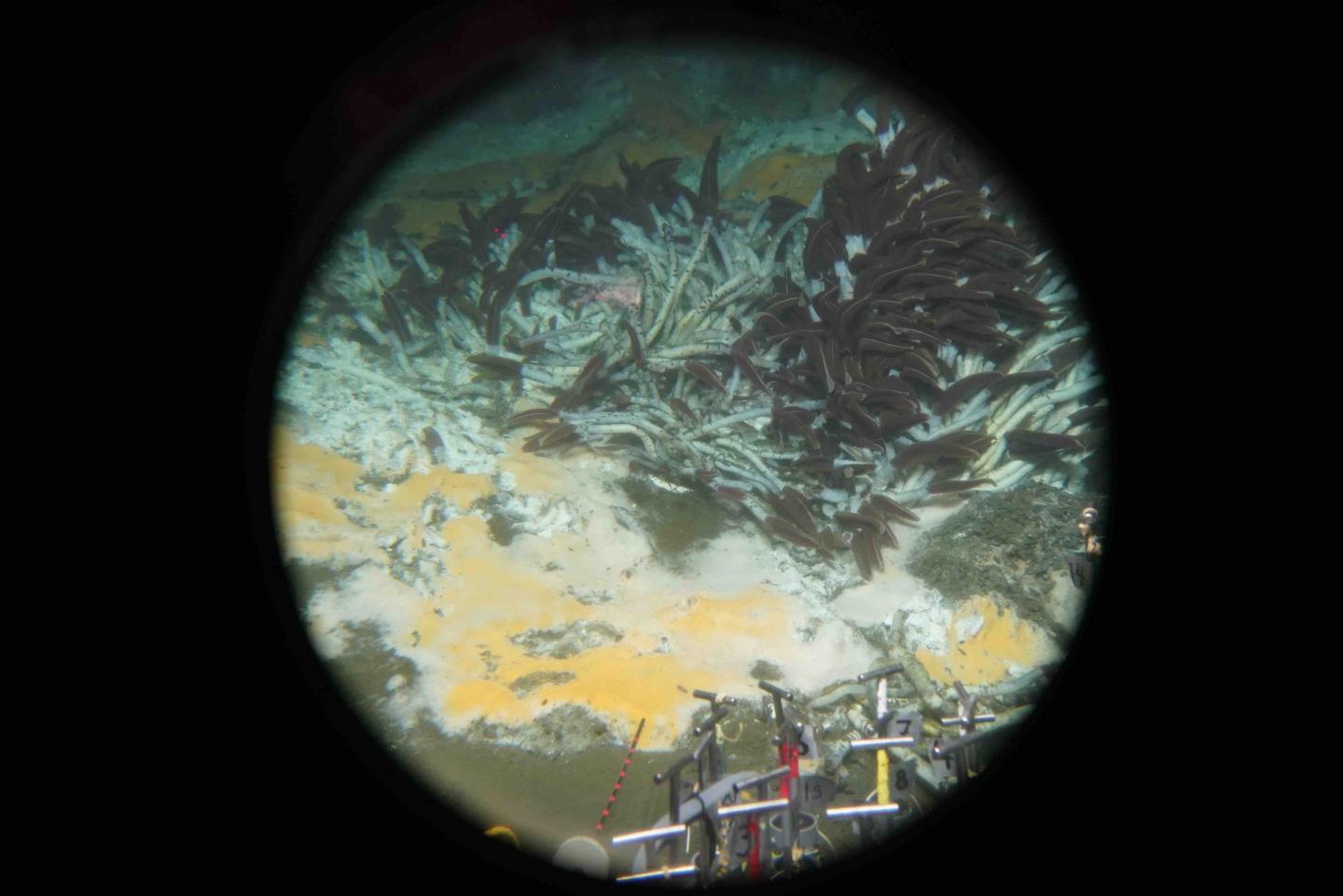
Researchers have documented extensive diversity in the microbial communities living in the extremely hot, deep-sea sediments located in the Guaymas Basin in the Gulf of California. This view of the Guaymas Basin seafloor was taken through the window of the Alvin submersible by Brett Baker in November 2018. Credit: Brett Baker/University of Texas at Austin.
The discovery of almost two dozen new types of deep-sea microbes could lead to a reduction in greenhouse gases.
Researchers from the University of Texas at Austin’s Marine Science Institute discovered that several of the newly discovered microbes use hydrocarbons like methane and butane as energy sources to survive and grow in extremely hot, deep-sea sediments.. Methane, in particular, is as a greenhouse gas that is known to havean impact on global climate change.
“This shows the deep oceans contain expansive unexplored biodiversity and microscopic organisms there are capable of degrading oil and other harmful chemicals,” assistant professor of marine science Brett Baker, the paper’s primary investigator, said in a statement. “Beneath the ocean floor huge reservoirs of hydrocarbon gases—including methane, propane, butane and others—exist now and these microbes prevent greenhouse gases from being released into the atmosphere.”
The new microbe communities are genetically different from microbes found in the ocean and soil that have been previously studied, but with some similarities like the ability to eat pollutants.
The study represents the largest-ever genomic sampling of sediments in the Guaymas Basin, located in the central area of the Gulf of California off the coast of Mexico.
The team analyzed sediments from 2,000 meters below surface where volcanic activity raises the temperature to about 200 degrees Celsius. They recovered 551 genomes, 22 of which that were genetically different enough to represent new branches in the tree of life, including some that were different enough to represent entirely new phyla.
“The tree of life is something that people have been trying to understand since Darwin came up with the concept over 150 years ago and it’s still this moving target at the moment,” Baker said. “Trying to map the tree is really kind of crucial to understanding all aspects of biology.
“With DNA sequencing and the computer approaches that we use, we’re getting closer and things are expanding quickly,” he added.
The team examined the interactions between microbial communities and the nutrients available to them in the environment by extracting DNA from sediment and microbe samples in nature. They then sequenced the DNA to piece together individual genomes and infer how the microbes consume different nutrients.
“For this, we try to look for organisms that have been studied before and look for similarities and differences,” former UT postdoctoral researcher Nina Dombrowski, who is now at the Royal Netherlands Institute for Sea Research, said in a statement. “This might initially sound easy, but really is not, since often more than half of the genes we find are so far uncharacterized and unknown.”
The researchers are now examining unstudied areas of the basin using the Alvin submersible, the same submarine that was used in the microbe discovery, as well as the discovery of the sunken Titanic cruise ship.
“We think that this is probably just the tip of the iceberg in terms of diversity in the Guaymas Basin,” Baker said. “So, we’re doing a lot more DNA sequencing to try to get a handle on how much more there is. This paper is really just our first hint at what these things are and what they are doing.”
The study was published in Nature Communications.




